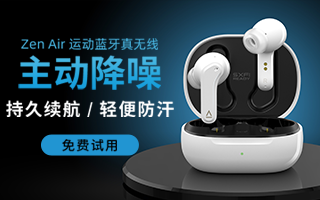|
1回顶部 String的getBytes()方法是得到一个字串的字节数组,这是众所周知的。但特别要注意的是,本方法将返回该操作系统默认的编码格式的字节数组。如果你在使用这个方法时不考虑到这一点,你会发现在一个平台上运行. 良好的系统,放到另外一台机器后会产生意想不到的问题。比如下面的程序,class TestCharset { public static void main(String[] args) { new TestCharset().execute(); } private void execute() { String s = "Hello!你好!"; byte[] bytes = s.getBytes(); System.out.println("bytes lenght is:" + bytes.length); }} Java中的编码支持 Java是支持多国编码的,在Java中,字符都是以Unicode进行存储的,比如,“你”字的Unicode编码是“4f60”,我们可以通过下面的实验代码来验证: class TestCharset { public static void main(String[] args) { char c = '你'; int i = c; System.out.println(c); System.out.println(i); }} 20320就是Unicode “4f60”的整数值。其实,你可以反编译上面的类,可以发现在生成的.class文件中字符“你”(或者其它任何中文字串)本身就是以Unicode编码进行存储的: char c = '\u4F60'; ... ... 2回顶部 即使你知道了编码的编码格式,比如: javac -encoding GBK TestCharset.java 编译后生成的.class文件中仍然是以Unicode格式存储中文字符或字符串的。 使用String.getBytes(String charset)方法 所以,为了避免这种问题,我建议大家都在编码中使用String.getBytes(String charset)方法。下面我们将从字串分别提取ISO-8859-1和GBK两种编码格式的字节数组,看看会有什么结果: class TestCharset { public static void main(String[] args) { new TestCharset().execute(); } private void execute() { String s = "Hello!你好!"; byte[] bytesISO8859 =null; byte[] bytesGBK = null; try { bytesISO8859 = s.getBytes("iso-8859-1"); bytesGBK = s.getBytes("GBK"); } catch (java.io.UnsupportedEncodingException e) { e.printStackTrace(); } System.out.println("-------------- \n 8859 bytes:"); System.out.println("bytes is: " + arrayToString(bytesISO8859)); System.out.println("hex format is:" + encodeHex(bytesISO8859)); System.out.println(); System.out.println("-------------- \n GBK bytes:"); System.out.println("bytes is: " + arrayToString(bytesGBK)); System.out.println("hex format is:" + encodeHex(bytesGBK)); } public static final String encodeHex (byte[] bytes) { StringBuffer buff = new StringBuffer(bytes.length * 2); String b; for (int i=0; i<bytes.length ; i++) { b = Integer.toHexString(bytes[i]); // byte是两个字节的,而上面的Integer.toHexString会把字节扩展为4个字节 buff.append(b.length() > 2 ? b.substring(6,8) : b); buff.append(" "); } return buff.toString(); } public static final String arrayToString (byte[] bytes) { StringBuffer buff = new StringBuffer(); for (int i=0; i<bytes.length ; i++) { buff.append(bytes[i] + " "); } return buff.toString(); }} -------------- 8859 bytes:bytes is: 72 101 108 108 111 33 63 63 63hex format is:48 65 6c 6c 6f 21 3f 3f 3f-------------- GBK bytes:bytes is: 72 101 108 108 111 33 -60 -29 -70 -61 -93 -95hex format is:48 65 6c 6c 6f 21 c4 e3 ba c3 a3 a1 可见,在s中提取的8859-1格式的字节数组长度为9,中文字符都变成了“63”,ASCII码为63的是“?”,一些国外的程序在国内中文环境下运行时, 经常出现乱码,上面布满了“?”,就是因为编码没有进行正确处理的结果。而提取的GBK编码的字节数组中正确得到了中文字符的GBK编码。字符“你”“好”“!”的GBK编码分别是:“c4e3”“bac3”“a3a1”。得到了正确的以GBK编码的字节数组,以后需要还原为中文字串时,可以使用下面方法: |
闂佽 鍋撻柟顖滃椤ユ垿鏌熺€涙ê濮囧┑顕嗘嫹闂佸搫琚崕鍐诧耿閸涙潙缁╅柟顖滃椤ワ拷>>
正在阅读:String.getBytes()方法中的中文编码问题String.getBytes()方法中的中文编码问题
2004-04-08 14:38
出处:Javajia
责任编辑:sdq

















